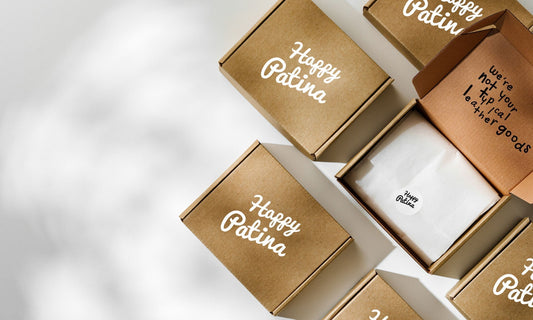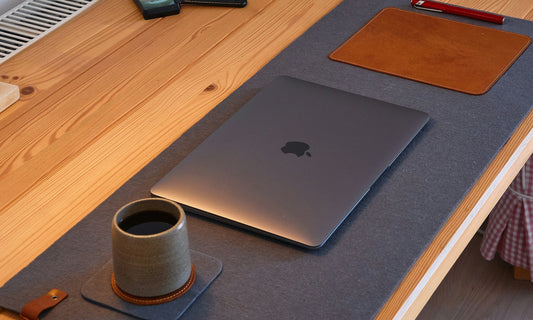
Materials & Care 101 — Understanding Vegetable-Tanned Leather
Oscar ArenasBehind every HappyPatina piece lies a material that is as alive as the person who uses it: vegetable-tanned leather. Unlike industrial leathers coated in chemicals and plastic, this leather evolves, breathes, and tells a story of time and touch.
In this guide, we’ll explore what vegetable-tanned leather is, why it stands apart from other types, and how to care for it so it grows more beautiful every day.
1. What Is Vegetable-Tanned Leather?
Vegetable-tanned leather is made using natural tannins extracted from tree bark, leaves, and fruits. This traditional process takes weeks — not hours — allowing the hide to keep its organic texture and scent. The result is a material that feels alive, firm at first, then softens and darkens gracefully with time.
Fact: Only about 10% of the world’s leather is still vegetable-tanned — it’s a craft reserved for brands that value authenticity over speed.
2. How It Differs from Chrome-Tanned Leather
Most modern leathers are chrome-tanned, a faster process using metallic salts that fix color and texture in a matter of hours. While efficient, it produces a uniform surface that never truly changes.
Vegetable-tanned leather, on the other hand, retains its natural imperfections and reacts to sunlight, moisture, and touch — aging into a unique patina that reflects its owner’s life.
| Feature | Vegetable-Tanned | Chrome-Tanned |
|---|---|---|
| Origin | Natural tannins from bark and plants | Chemical salts (chromium) |
| Time to produce | Weeks | Hours |
| Aging | Develops patina and character | Remains static |
| Feel | Warm, firm, authentic | Soft, uniform, coated |
3. The Beauty of Patina
Patina is the visible proof of a life well lived. With every use, the leather darkens slightly, edges smooth out, and a soft sheen appears. No two pieces will ever age alike — that’s the quiet magic of natural leather.
At HappyPatina, we design each accessory to highlight this evolution. We don’t fight change; we celebrate it.
4. How to Care for Vegetable-Tanned Leather
Proper care ensures that your leather remains supple, clean, and richly toned for decades.
- Wipe gently with a soft, dry cloth once a week to remove dust.
- Apply a thin layer of neutral leather conditioner every month.
- Keep away from direct sunlight and heat sources.
- If wet, let it air dry naturally — never use a hair dryer.
- Store in a cotton dust bag, not plastic.
Tip: Less is more. Over-conditioning can saturate the surface and block the natural breathability of the leather.
5. Why We Choose It
Vegetable-tanned leather embodies everything we believe in at HappyPatina: authenticity, longevity, and quiet beauty. Each hide carries subtle variations that make every product truly one of a kind.
It’s leather with soul — not just surface.
Key Takeaways
- Vegetable-tanned leather is tanned naturally using plant extracts.
- It ages gracefully, developing a unique patina with time.
- Proper care preserves flexibility and richness for decades.
- Every HappyPatina piece tells its own story through daily use.
Care Essentials
FAQs
Does vegetable-tanned leather require more maintenance?
Not necessarily. It simply needs gentle, regular care — dusting, conditioning, and protection from moisture — to maintain its texture and color.
Why does my leather darken over time?
Exposure to light and the natural oils from your hands cause a gradual deepening of color known as patina. This is a sign of genuine quality, not wear.
Can vegetable-tanned leather get wet?
It can withstand light moisture, but avoid soaking. If it gets wet, pat it dry and let it air naturally away from heat.
Explore More Guides
- The Living Leather Method™ — Our Way of Crafting Timeless Goods
- Design That Endures — The Beauty of Honest Materials
- A Life Well Crafted — The Philosophy Behind HappyPatina
Explore the Leather Care Collection
Refined tools and formulas to nourish and protect your HappyPatina pieces for years to come.
Shop the Leather Care Collection →



